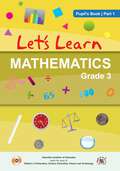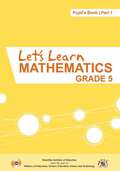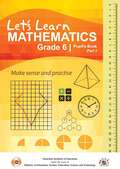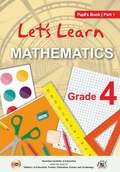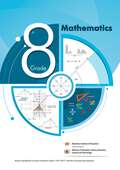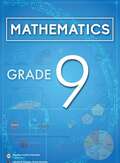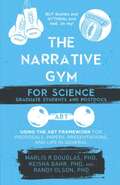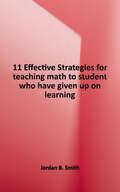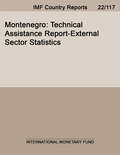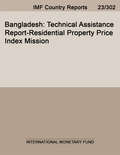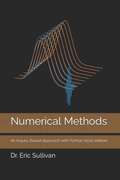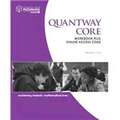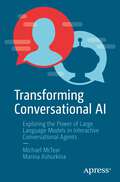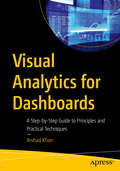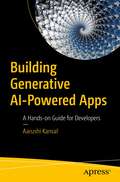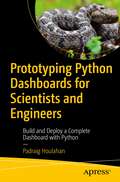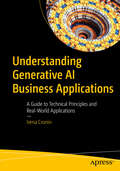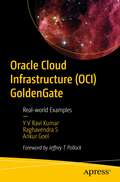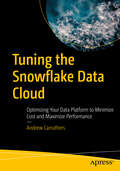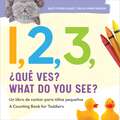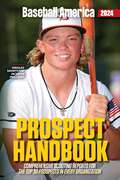- Table View
- List View
Let’s Learn Mathematics Part-1 - Pupil’s Book class 3 - MIE
by Mauritius Institute of EducationThe Grade 3 Mathematics Pupil’s Book Part 1 offers a comprehensive exploration of key mathematical concepts essential for third-grade students. It covers Geometry, introducing shapes, sides, vertices, patterns, tessellation, and activities integrating ICT tools like Ms Paint. Additionally, it delves into Graphs, teaching how to understand and create pictograms, count shapes, and interpret data using ICT tools. The book also focuses on Numbers, from 0 to 1000, emphasizing place value, number sequences, and exercises involving the abacus and number lines. Furthermore, it addresses Addition techniques, including adding numbers with and without carrying, solving word problems, and utilizing ICT for practice. Mass concepts, such as comparing weights and practical activities to grasp kilograms, are also covered. Emphasizing technology in learning, the book incorporates continuous assessment and profiling sections to monitor student progress effectively.
Let's Learn Mathematics Part-1 - Pupil's Book class 5 - MIE
by Mauritius Institute of EducationThe "MATHEMATICS Grade 5 Pupil’s Book Part 1" is a comprehensive textbook crafted by a panel of mathematics experts from the Mauritius Institute of Education and the Ministry of Education and Human Resources, Tertiary Education and Scientific Research. Designed for Grade 5 students in Mauritius, the book covers essential aspects of the mathematics curriculum, including numeration, notation, geometry, fractions, and powers. With a vibrant and visually appealing layout, the book features clear learning objectives, engaging activities, illustrative examples, and diverse exercises for practice. Aligned with the national curriculum framework, it incorporates continuous assessments to gauge understanding. The book employs a friendly tone to inspire students, providing encouragement, tips, and hints, and includes questions, puzzles, and games to foster curiosity. Intended for students, teachers, and parents, this resource aims to cultivate mathematical proficiency, skills, confidence, appreciation, and interest in young learners.
Let's Learn Mathematics Part-1 - Pupil's Book class 6 - MIE
by Mauritius Institute of EducationGrade 6 part 1 mathematics textbook follows the National Curriculum Framework, encompassing units on shapes, numeration, fractions, decimals, and problem-solving techniques. The curriculum introduces students to 2-D and 3-D shapes, emphasizing properties, classification, and drawing techniques. Numeration and place value cover reading and writing large numbers, using tools like arrays and abacus. The text explores division with remainders, methods for comparing quantities, and the concepts of fractions and decimals, detailing addition, subtraction, multiplication, and division operations. Problem-solving strategies like thinking blocks and drawing diagrams are introduced with examples spanning various real-world scenarios. The book includes continuous assessments and challenging problems across multiple mathematical domains, fostering problem-solving skills. Motivational quotes from mathematicians and scientists aim to inspire students, while thorough references provide additional resources. Answers are provided with explanations, utilizing LaTeX for mathematical expressions. This comprehensive textbook aims to engage and empower Grade 6 pupils in their mathematical learning journey.
Let's Learn Mathematics Part-1 - Pupil's Book class 4 - MIE
by Mauritius Institute of EducationThe Mathematics Grade 4 Pupil's Book Part 1 for Mauritius encompasses a comprehensive curriculum divided into eight units. It begins with foundational skills in numeration, addition, subtraction, multiplication, and division, progressing to more advanced concepts like patterns, even and odd numbers, and fractions. The foreword and preface introduce the book's objectives, layout, and contributors, while the table of contents aids navigation. Learning objectives emphasize key skills pupils should master, including numerical operations and problem-solving. Each unit features subtopics, examples, exercises, activities, an IT corner, and continuous assessment. From numeration and notation to fractions, the textbook systematically guides students through the mathematical landscape. A final revision sheet consolidates learning, offering a thorough review with diverse question types and answers, ensuring a holistic grasp of Grade 4 mathematics.
Mauritius Mathematics Grade 7 (Part-II) - MIE
by Mauritius Institute of EducationThe Mathematics Grade 7 textbook by Mauritius Institute of Education.
Mathematics class 7 - MIE
by Mauritius Institute of EducationThe Grade 7 Mathematics textbook, authored by Professor Vassen Naëck and a team from the Mauritius Institute of Education, serves as a vital resource in aligning with the National Curriculum Framework, guiding students through a seamless transition from Grade 6 to secondary education. Its comprehensive content spans Numbers, Algebra, Measures, Geometry, and Probability + Statistics, emphasizing problem-solving and real-world applications. Utilizing a pedagogical approach that prioritizes sense-making and reasoning, the textbook integrates digital tools like GeoGebra to deepen understanding. With various icons highlighting activities, exercises, and notes, the text promotes interactive and engaging learning experiences, fostering a deeper comprehension of mathematical concepts.
Mathematics class 8 - MIE
by Mauritius Institute of EducationThe Grade 8 Mathematics textbook by the Mauritius Institute of Education, published in 2021, presents a comprehensive curriculum aligned with the National Curriculum Framework. It covers diverse mathematical topics, including number sequences, indices, rate and proportion, coordinates, algebra, and geometry. Each chapter begins with clear learning objectives and provides ample exercises, examples, and summaries to aid comprehension. Emphasizing real-life applications, the textbook illustrates concepts such as Fibonacci sequences in nature and architectural scales, fostering contextual learning. The educational content is meticulously crafted to enhance learners' cognitive skills through practical activities and contextualized problem-solving. This textbook serves as an invaluable resource for Grade 8 students, facilitating their mathematical understanding and application in various real-world scenarios.
Mathematics class 9 - MIE
by Mauritius Institute of EducationPublished by the Mauritius Institute of Education in 2021, the Grade 9 mathematics textbook offers a comprehensive alignment with the National Curriculum Framework, prioritizing the enhancement of learners' cognitive abilities through contextualized materials. Covering a range of topics including indices, binomial expressions, quadratics, and algebraic manipulation, the textbook incorporates exercises and continuous assessments to reinforce learning. Rooted in Variation Theory, the pedagogical approach aims to facilitate students' discernment of key concepts within each topic, fostering procedural fluency. This collaborative effort between MIE academics and seasoned educators ensures the delivery of high-quality content that effectively meets educational objectives, providing students with a solid foundation in mathematics.
The Narrative Gym for Science Graduate Students and Postdocs: Using the ABT Framework for Proposals, Papers, Presentations, and Life in General
by Randy Olson Marlis Douglas Keisha BahrIt’s ABT Time: Science consists of equal parts research and communication, AND if you do a good job with communication then your research will reach its full impact, BUT communication can’t be mastered in a day, THEREFORE get thee to the Narrative Gym with this book! <p><p> What is the ABT? Only the most important communications tool you’ll ever need. It provides the core of narrative structure, which is what makes the difference between whether you bore or confuse an audience versus interest and engage them. The ABT is about the three forces of narrative (agreement, contradiction, consequence) which are embodied in the three words of the ABT (and, but, therefore). <P><P> In this short, simple, practical book three scientists present what they have learned about the use of the ABT with science graduate students and postdocs. It provides an introduction to the ABT with an explanation of how to apply it to everything from proposals, papers and presentations to your life in general.
11 Effective Strategies for Teaching Math to Students Who Have Given Up on Learning
by Jordan B. SmithAs a special needs teacher, your time is already limited. From meetings to paperwork, there is little time left for actual teaching. Do you really have time to do more? These 11 strategies aren’t about doing more. It’s about getting the most out of your students most effectively and practically. They will enable students to develop a deep love of math and skills they can take with them for other subjects and into adulthood. No matter the level of despondency among your students, "11 Effective Strategies for Teaching Math to Students Who Have Given Up on Learning" equips you with the tools to revitalize your passion for math. Turn your classroom into a dynamic hub of exploration and discovery, and witness the joy of learning rekindled among your students. If you're ready to transform your math teaching journey and empower every student to succeed, this book adds to your collection of math teaching books.
Montenegro: Technical Assistance Report-report On External Sector Statistics Mission (Imf Staff Country Reports)
by International Monetary Fund. Statistics Dept.A report from the International Monetary Fund.
Bangladesh: Technical Assistance Report-residential Property Price Indices Mission (Imf Staff Country Reports)
by International Monetary Fund. Statistics Dept.A report from the International Monetary Fund.
Numerical Methods: An Inquiry Based Approach With Python
by Eric SullivanThis book is an inquiry-based approach to a first semester undergraduate Numerical Methods or Numerical Analysis course. The book covers floating point arithmetic, function approximation via Taylor series, numerical root finding, numerical differentiation and integration, an introduction to computational optimization, several methods from numerical linear algebra, several methods from ordinary differential equations, and an introduction to numerical partial differential equations. As an inquiry-based book this is a not a traditional text with complete exposition. Instead, this book contains collections of exercises that guide the student through the building and analysis of numerical algorithms. A heavy emphasis is put on numerical experimentation instead of mathematical proof. Each chapter ends with collections of challenging exercises and projects. Students are encouraged to work every example and exercise in the book to gain full understanding of the material. The primary programming language for this book is Python with an emphasis on using numpy, matplotlib, and scipy to solve computational problems. The intended student audience is sophomore to junior level STEM majors with a background in Calculus, Linear Algebra, and Differential equations.
Transforming Conversational AI: Exploring the Power of Large Language Models in Interactive Conversational Agents
by Michael McTear Marina AshurkinaAcquire the knowledge needed to work effectively in conversational artificial intelligence (AI) and understand the opportunities and threats it can potentially bring. This book will help you navigate from the traditional world of dialogue systems that revolve around hard coded scripts, to the world of large language models, prompt engineering, conversational AI platforms, multi-modality, and ultimately autonomous agents.In this new world, decisions are made by a system that may forever remain a ‘black box’ for most of us. This book aims to eliminate unnecessary noise and describe the fundamental components of conversational AI. Past experiences will prove invaluable in constructing seamless hybrid systems. This book will provide the most recommended solutions, recognizing that it is not always necessary to blindly pursue new tools.Written in unprecedented and turbulent times for conversational interfaces you’ll see that despite previous waves of advancement in conversational technology, now conversational interfaces are gaining unparalleled popularity. Specifically, the release of ChatGPT in November 2022 by Open AI revolutionized the conversational paradigm and showed how easy and intuitive communication with a computer can be. Old professions are being disrupted, new professions are emerging, and even the most conservative corporations are changing their strategy and experimenting with large language models, allocating an unprecedented amount of budget to these projects. No one knows for sure the exact future of conversational AI, but everyone agrees that it’s here to stay. What You'll Learn See how large language models are constructed and used in conversational systems Review the risks and challenges of new technologies in conversational AI Examine techniques for prompt engineering Enable practitioners to keep abreast of recent developments in conversational AI Who This Book Is For Conversation designers, product owners, and product or project managers in conversational AI who wish to learn about new methods and challenges posed by the recent emergence in the public domain of ChatGPT. Data scientists, final year undergraduates and graduates of computer science
Visual Analytics for Dashboards: A Step-by-Step Guide to Principles and Practical Techniques
by Arshad KhanThis book covers the key principles, best practices, and practical techniques for designing and implementing visually compelling dashboards. It explores the various stages of the dashboard development process, from understanding user needs and defining goals, to selecting appropriate visual encodings, designing effective layouts, and employing interactive elements. It also addresses the critical aspect of data storytelling, examining how narratives and context can be woven into dashboards to deliver impactful insights and engage audiences. Visual Analytics for Dashboards is designed to cater to a wide range of readers, from beginners looking to grasp the fundamentals of visual analytics, to seasoned professionals seeking to enhance their dashboard design skills. For different types of readers, such as a data analyst, BI professional, data scientist, or simply someone interested in data visualization, this book aims to equip them with the knowledge and tools necessary to create impactful dashboards. What you’ll learn The principles of data visualization How to create effective dashboards Meet all the requirements for visual analytics/data visualization/dashboard courses Deepen understanding of data presentation and analysis How to use different kinds of tools for data analysis, such as scorecards and key performance indicators Who This Book Is For Business analysts, data analysts, BI professionals, end-users, executives, developers, as well as students in dashboards, data visualizations, and visual analytics courses.
Building Generative AI-Powered Apps: A Hands-on Guide for Developers
by Aarushi KansalGenerative AI has gone beyond the responsibility of researchers and data scientists and is being used by production engineers. However, there is a lot of confusion where to get started when building an end-to-end app with generative AI. This book consolidates core models, frameworks, and tools into a single source of knowledge. By providing hands-on examples, the book takes you through the generative AI ecosystem to build applications for production.The book starts with a brief and accessible introduction to transformer models before delving into some of the most popular large language models and diffusions models (image generation). These models are the foundations of both AI and your potential new apps. You will then go through various tools available to work with these models, starting with Langchain, a framework to develop foundational models, which is the next building block you should grasp after understanding generative AI models. The next chapters cover databases, caching, monitoring, etc., which are the topics necessary to build larger-scale applications. Real-world examples using these models and tools are included.By the end of this book, you should be able to build end-to-end apps that are powered by generative AI. You also should be able to apply the tools and techniques taught in this book to your use cases and business.What You Will LearnWhat is Generative AI?What is ChatGPT and GPT4?What are language models and diffusions models?How do we deploy LangChain and HuggingFace?Who This Book Is ForSoftware engineers with a few years of experience building applications in any language or infrastructure
Prototyping Python Dashboards for Scientists and Engineers: Build and Deploy a Complete Dashboard with Python
by Padraig HoulahanCreate interactive and data-driven dashboards using Python. This hands-on guide is a practical resource for those (with modest programming skills) in scientific and engineering fields looking to leverage Python's power for data visualization and analysis in a user-friendly dashboard format. You’ll begin by gaining a fundamental understanding of Python programming, including data types, lists, dictionaries, and data structures. The book then delves into the world of reactive programming with Plotly and Dash, offering a hands-on approach to building interactive web-based dashboards. Next, you’ll see how to work with online data, how to scrape and clean datasets, and keep files up-to-date. The book also guides you through planning a dashboard prototype, outlining project tasks, trends, forecasts, spectra, and other design considerations. It concludes with a discussion of how the dashboard can be used for data visualization of real data, explaining the usefulness of tools such as spectra. By providing detailed examples for download and customization, Prototyping Python Dashboards for Scientists and Engineers will equip you with the skills needed to jumpstart your own development efforts. What You’ll Learn Design a dashboard with PythonConvert and filter Excel formatted files to produce CSV filesCreate browser-served graphics with PLOTLYGenerate polynomial trend lines for forecastingBuild a Unix service to share your dashboard Who This Book Is For Scientists, engineers, students, programmers, and data enthusiasts who aspire to harness Python's potential for data visualization and analysis through the creation of interactive dashboards. Many will be pragmatic programmers with modest skills and limited resources who mainly want to see a working solution they could emulate.
Understanding Generative AI Business Applications: A Guide to Technical Principles and Real-World Applications
by Irena CroninThis guide covers the fundamental technical principles and various business applications of Generative AI for planning, developing, and evaluating AI-driven products. It equips you with the knowledge you need to harness the potential of Generative AI for enhancing business creativity and productivity.The book is organized into three sections: text-based, senses-based, and rationale-based. Each section provides an in-depth exploration of the specific methods and applications of Generative AI. In the text-based section, you will find detailed discussions on designing algorithms to automate and enhance written communication, including insights into the technical aspects of transformer-based Natural Language Processing (NLP) and chatbot architecture, such as GPT-4, Claude 2, Google Bard, and others. The senses-based section offers a glimpse into the algorithms and data structures that underpin visual, auditory, and multisensory experiences, including NeRF, 3D Gaussian Splatting,Stable Diffusion, AR and VR technologies, and more. The rationale-based section illuminates the decision-making capabilities of AI, with a focus on machine learning and data analytics techniques that empower applications such as simulation models, agents, and autonomous systems.In summary, this book serves as a guide for those seeking to navigate the dynamic landscape of Generative AI. Whether you’re a seasoned AI professional or a business leader looking to harness the power of creative automation, these pages offer a roadmap to leverage Generative AI for your organization’s success.What You Will LearnWhat are the technical elements that constitute the makeup of Generative AI products?What are the practical applications of Generative AI?How can algorithms be designed to automate and improve written communication?What are the latest Generative AI architectures and algorithms?Who This Book Is ForData scientists, data analysts, decision makers, and business executives interested in gaining an understanding of Generative AI products
Oracle Cloud Infrastructure (OCI) GoldenGate: Real-world Examples
by Y V Ravi Kumar Raghavendra S Ankur GoelThis book focuses on the utilization of GoldenGate Services (GGS) in conjunction with a microservices architecture on the Oracle cloud (OCI), primarily for data migration and integration across various data sources and targets.The book begins with a practical example of utilizing GGS on a Marketplace VM, progressively advancing to in-depth discussions on implementing GoldenGate as a Service on OCI. The book offers illustrative guides for data replication between RDBMSs (such as Oracle, Postgres, and big data targets such as Kafka). Additionally, it explores monitoring techniques using Enterprise Manager and Grafana dashboards. A comparative analysis is presented between traditional VM-based GoldenGate installations and the OCI service model. Special attention is given to Zero Downtime Migration (ZDM) and leveraging GGS for database migration from on-premises to OCI. Some chapters address multi-cloud replication using OCI GGS and include real-life case studies.By the end of this book you will have gained comprehensive insights into the architectural design of GoldenGate Services and will be adept at replicating data using GGS, enabling you to replicate setups in your own environments.What You Will LearnSet up GoldenGate Services for high availability (HA), disaster recovery (DR), migration of data to cloud, and moving data into the data lake or lakehousePerform logical migration of data to the cloud using the ZDM tool (ZDM uses GoldenGate internally).Replicate data to big data targetsMonitor GGS using Enterprise Manager and GrafanaReplicate data in a multi-cloud environment Who This Book Is ForOracle database administrators who want to replicate data or use Oracle GoldenGate Services for migration and setup of high availability (HA) and disaster recovery (DR); and data engineers who want tobuild the data warehouse, data lake, data lakehouse to push data in near real-time
Tuning the Snowflake Data Cloud: Optimizing Your Data Platform to Minimize Cost and Maximize Performance
by Andrew CarruthersThis project-oriented book presents a hands-on approach to identifying migration and performance issues with experience drawn from real-world examples. As you work through the book, you will develop skills, knowledge, and deep understanding of Snowflake tuning options and capabilities while preparing for later incorporation of additional Snowflake features as they become available. Your Snowflake platform will cost less to run and will improve your customer experience. Written by a seasoned Snowflake practitioner, this book is full of practical, hands-on guidance and advice specifically designed to further accelerate your Snowflake journey. Tuning the Snowflake Data Cloud provides you a pathway to success by equipping you with the skills, knowledge, and expertise needed to elevate your Snowflake experience. The book shows you how to leverage what you already know, adds what you don’t, and helps you apply it toward delivering for your Snowflake accounts. Read this book to embark on a voyage of advancement and equip your organization to deliver consistent Snowflake performance. What You Will Learn Recognize and understand the root cause of performance bottlenecks Know how to resolve performance issues Develop a deep understanding of Snowflake performance tuning options Reduce expensive mistakes, remediate poorly performing code Manage Snowflake costs
1, 2, 3, What Do You See? English-Spanish Bilingual
by Rockridge PressTeach toddlers to count from 1 to 20 in English and Spanish! Watch your little one learn to count in two languages with this photo-filled book of happy puppies, juicy berries, and bouncy balls! Each page reveals a new number and a new collection of bright and colorful objects, making it easy for toddlers to start counting in English and Spanish. Fundamental skills—Prep your toddler for preschool as they practice identifying simple objects and counting from 1 to 20. Education in two languages—Build the foundation for a lifetime of bilingual learning by introducing your child to key vocabulary at an early age. Make learning fun—Bring learning to life for your child with vibrant illustrations and familiar words and items. Give your little learner a head start with this colorful counting book for toddlers.
Baseball America 2024 Prospect Handbook Digital Edition
by The Editors at Baseball AmericaThe 2024 Prospect Handbook is your guide to the next wave of MLB stars The 2024 Prospect Handbook is your guide to the next wave of MLB stars. With complete scouting reports on more than 900 prospects, the Prospect Handbook is a must-have for superfans as well as fantasy players. Dominate your dynasty league and be the first to know about the stars of the 2020s and early 2030s.
